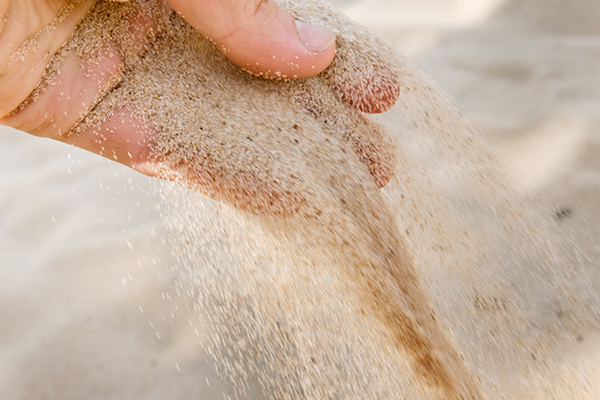It's Just Sand. Or Is It?
IT'S JUST SAND, OR IS IT?

Joint sand in a segmental pavement installation is a necessary component to aid in the interlocking system, transferring the load from unit to unit and it provides a cushion between them. Not all sand is created equal and there is only one type of sand when installed properly that will produce the desired end results.
First, let’s explore some sand types that are sometimes used in segmental systems but won’t do the job as well. A common type is silica sand which is made up of fine rounded particles that are about the same size. There is no structure to the sand and can be easily dislodged from the joints when under pressure. This results in a weak joint that is vulnerable to sand wash out, weed growth, insect infestation and potential tracking into pools and buildings.
Another type of sand often used is play sand which is very coarse, round in shape and tends to be dirty. This type of sand lacks a natural beauty in the joints and can be difficult to install and stabilize due to its inconsistency.
The ideal joint sand for segmental pavement systems will meet the ASTM C144 standard. This is a specific gradation of fractured angular sand particles of different sizes. This sand will create the structure in the joint which will start to interlock the system together.
Most project owners want a solid sand joint to prevent sand washout, reduce weed growth and deter insect infestation. This will keep their surface looking beautiful over time as well as prevent potential safety hazards. One option for joint stabilization is to apply a Trident joint stabilizing sealer once the ASTM C 144 joint sand has been installed. Another option is to use PolySweep, polymeric sand made up of ASTM C144 joint sand with a clear setting polymer. In the end, a properly installed system with stabilized joints tends to last longer and is aesthetically pleasing.



